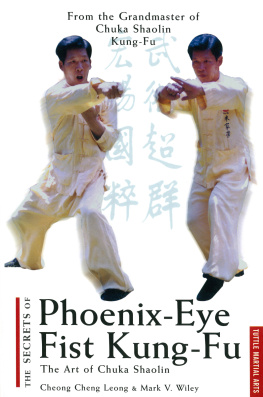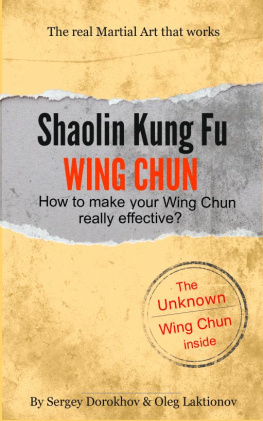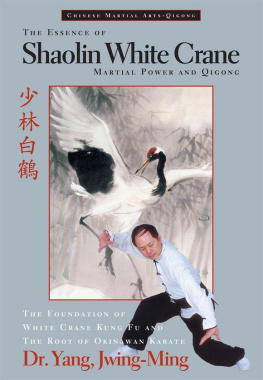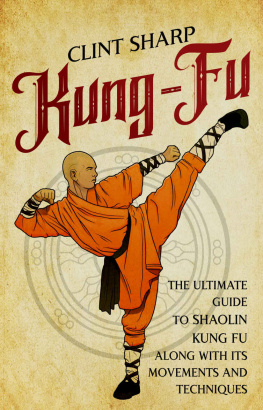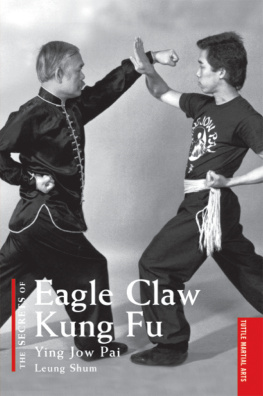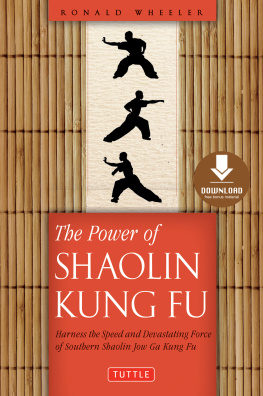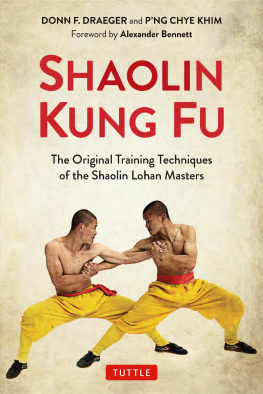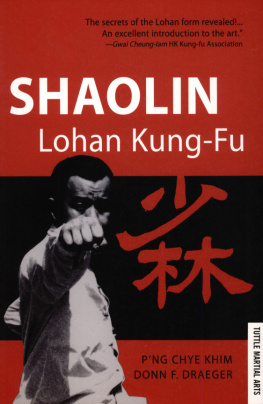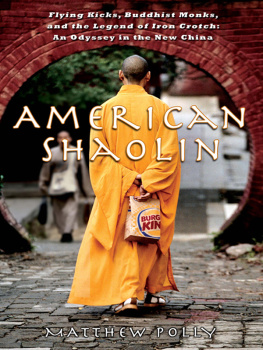
Afterword
The martial arts are ways of life. Indeed, the only way to become proficient and eventually master the martial arts is to immerse yourself in them body, mind, and spirit. There is an old saying in Chinese kung-fu circles, that when you begin the martial arts you are a regular person. After training for a while you become a person with kung-fu. Then, after several more years of training you become a kung-fu person. Only after you have truly consumed and mastered the art do you go full circle and once again become a regular person. At this point, you have become one with the true essence of the martial arts: a free-flowing, spontaneous, and ever-evolving entity.
As a good kung-fu practitioner, one has to be humble socially but aggressive in a fight. In the present society, no matter how good you have trained in the martial arts, you must never go looking for trouble. What, then, is the point of training in these arts and developing these fighting skills? Self-development and evolution through the unremitting discipline that is necessary to mastering the martial arts over a lifetime.
It must be understood, however, that learning martial arts without practicing chi kung training is a waste of time, for when you become old you will have nothing to show for your lifelong practice and devotion. Moreover, it is also advisable to become proficient in a healing modality, so that one may help others. As we have already discussed, possessing the ability to heal others is the balancing factor of knowing how to injure them. Indeed, one who is only versed in the fighting art, and not its collateral chi kung health aspect or healing dimension, can never come to truly understand and master the art or become a fully evolved human being.
We hope, then, that this book has exposed to the reader interested in this rare and dynamic art a broader side of the art and some of the things necessary to master it: fighting principles, basics, two-person fighting form, pole form, weapon applications, chi kung discussion and exercise, and a presentation of the healing art.
For those who possess a sincere interest and desire to learn more about Chuka Shaolin, please feel free to contact the authors care of the publisher.
APPENDIX A

Lineage of Chuka Shaolin
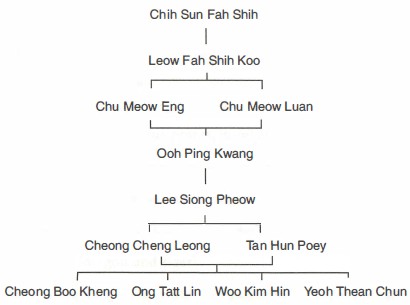
APPENDIX B

The Forms of
Chuka Shaolin
S OLO E MPTY- H AND F ORMS
kai san chien (opening the mountain)
er shih sze tien (twenty-four points, number one)
er shih sze tien (twenty-four points, number two)
hu chao chien (tiger claw, ascending tiger)
hu chao chien (tiger claw, descending tiger)
loong hu chien (dragon and tiger)
ta choong koong (stamping inside, the palace being surrounded)
mei hua chien (plum blossom)
lien huang tuei (continuous kicks)
tong tze pai kwan yin (boy paying respects to the goddess of mercy)
yin yan er sien ku (two positive and negative heavenly ladies)
ta ooh li (strength performance)
shih pa lohan chien (eighteen hands of the lohan)
foong yen tin sun chien (phoenix-eye fist guarding the mountain)
shih ta hsing hsian (ten animals fighting movements)
T WO- M AN E MPTY- H AND F ORMS
kung sow twee chai (prearranged sparring, set one)
kung sow twee chai (prearranged sparring, set two)
S OLO W EAPON F ORMS
liu tien pan koon (six-and-a-half-point pole)
mei hua koon (plum blossom pole)
sho ho chian (neck locking long spear)
shih sun chian (thirteen-points long spear)
chu toh (farmers hoe)
tze mu tau (double knives)
tieh cher (iron rulers)
T WO- M AN W EAPON F OR
koon twee chai (prearranged pole pattern)
APPENDIX C

Glossary of
Chuka Shaolin Terms
The following is a glossary of the Chuka Shaolin terms found within this book. They are presented first in English and then in Mandarin.
double dragon two-finger strike | swang-loon |
deflect or block | kher |
double-palm block | swang kher chang |
double phoenix-eye fist strike | swang fung yen |
energy-building exercises | chi kung |
essence | jing |
farmers hoe | chu toh |
field of elixir | tan tien |
forward horse | chin-ma |
hand techniques | sou fa |
hanging-horse stance | tiow ma |
high and low-wrist block | yin yan tiow kher shou |
horse-riding stance | ma pu |
intention | yi |
iron rulers | tieh cher |
lightning kick | san-tien chiau |
long spear | chiang |
low block | sia kher shou |
middle-palm block | zhong aun chang |
palm heel | chang |
phoenix-eye fist kung-fu | Chuka Shaolin |
phoenix-eye fist strike | fung yen |
pole | koon |
ready position | choon pei |
salutation | ching |
shape postures | xing |
single-palm block | tuoh chang |
six-and-a-half-point pole | kai sun koon |
solo empty-hand forms | chuan-tao |
spirit | shen |
thrust-penetrate-tear hand | cha ching shou |
twin knives | tze mu tau |
two-person prearranged sparring | kung sow twee chai |
upper-palm block | sun tuoh chang |
upper-wrist block | sun kher shou |
vital energy | chi |

Wu-Shu Zhao Zhuen
Hong Yang Gao Chue
To unite and gain superiority for our martial arts
To promote and propagate our national purity
[Calligraphy written by Pai Shen, the late abbot of Penangs Kek Lok Si Temple, when he was eighty years old. It was presented to Grandmaster Cheong Cheng Leong as a gift and memento of his selfless, lifelong promotion of Chinese martial art and culture.]
CONTENTS


